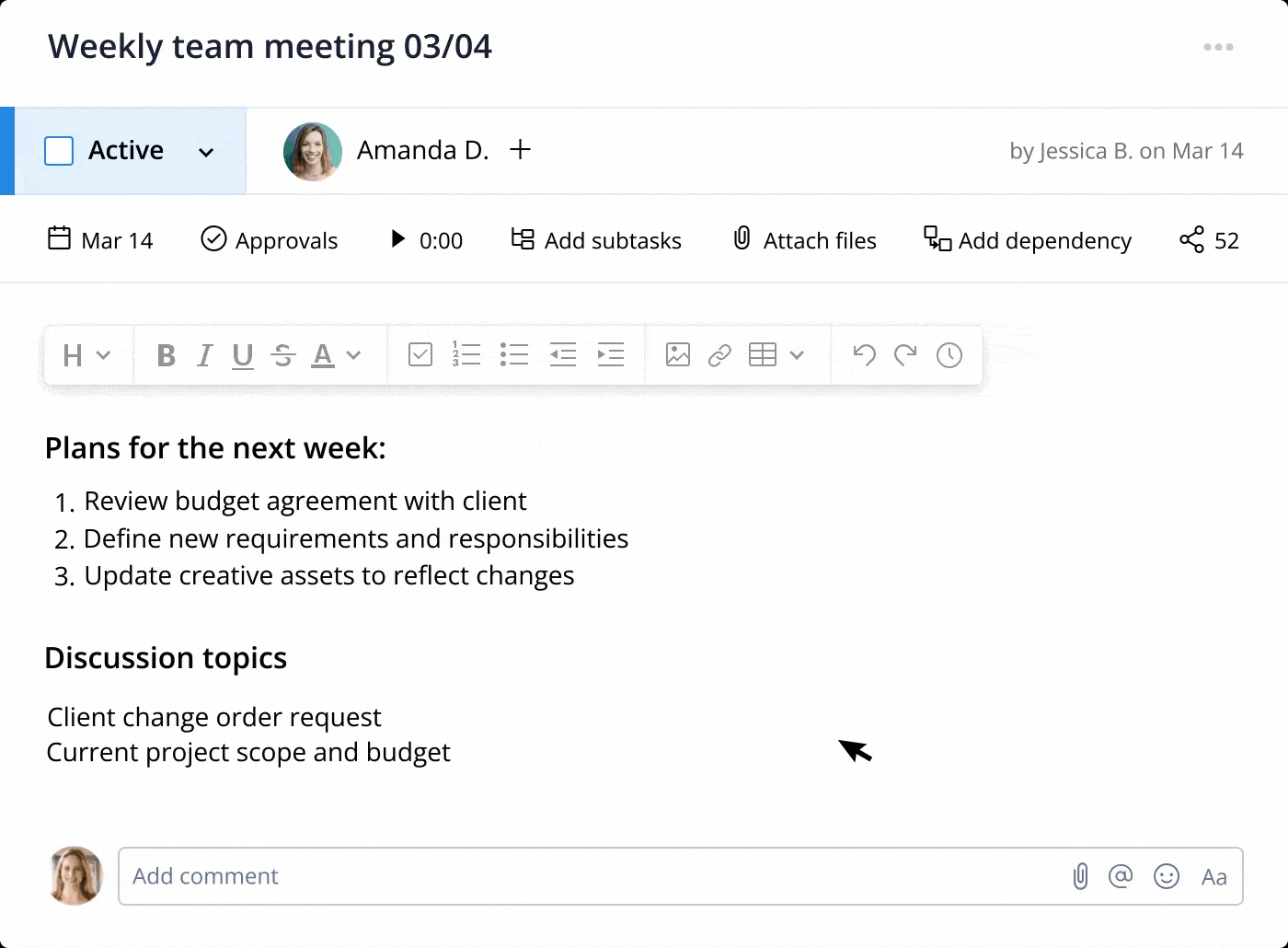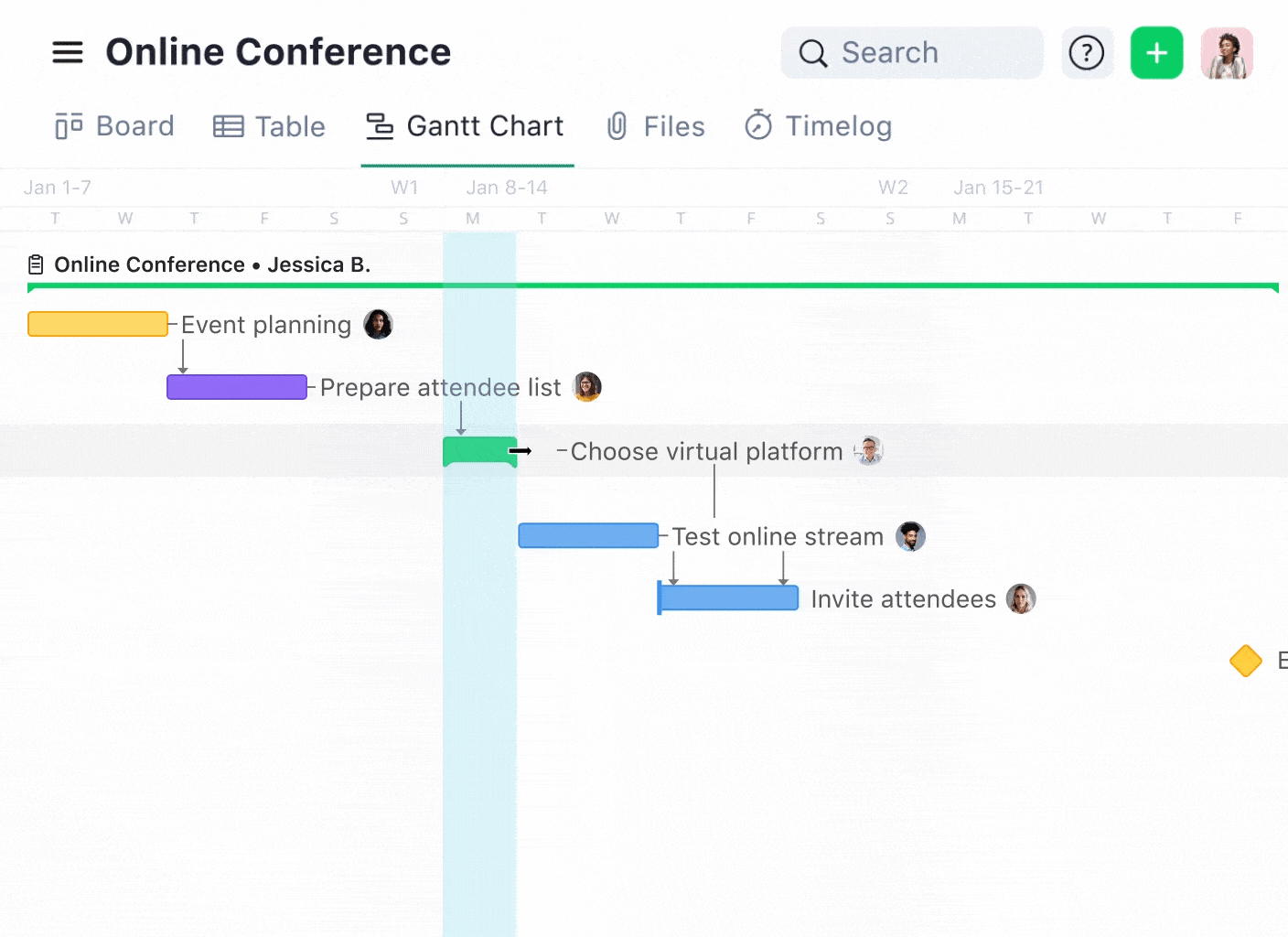Key takeaways:
- What is bottom-up estimating? It’s a project management method that calculates total costs and timelines by estimating each individual task in detail.
- What are the benefits of bottom-up estimating? It offers high accuracy, saves time, reduces risks, improves project success, and increases team productivity.
- What are the drawbacks of bottom-up estimating? It can be time-consuming, challenging to scale, and is often unsuitable for projects with tight deadlines.
- How does bottom-up estimating differ from top-down? Bottom-up focuses on detailed estimates per task, while top-down uses high-level estimates from past projects.
- What tool can enhance bottom-up projects? Wrike is ideal for creating precise bottom-up estimates, managing tasks, and visualizing project progress effectively.
Need help creating the most accurate project forecast of all time? Look no further than bottom-up estimating.
Bottom-up estimating in project management is used to forecast how long a project will take (or cost), incorporating the lower-level components of the work breakdown structure (WBS).
In this article, we’ll dive deep into what bottom-up estimating is, the pros and cons of bottom-up estimating, and how it differs from a top-down estimating approach.
Explore more about this effective technique, along with the tool you’ll need to master it (Hint: It’s Wrike.)
What is bottom-up estimating?
Bottom-up estimating is a method where project costs and timelines are calculated starting from the smallest, most detailed tasks. Each component is estimated individually and aggregated to form the total project effort. This structured approach enhances both the accuracy and reliability of the overall estimates.
How accurate is the bottom-up estimation technique?
Because the bottom-up estimation technique uses every known factor to determine the project’s needs, it is considered more accurate than most other methods.
When you have all the details related to a project before you begin, it is easier to determine:
- Where bottlenecks may arise (and how to banish them before they do)
- How to overcome a lack of project resources
- How your team can strategically navigate this particular project
This is particularly effective when starting a project that is unique or new to your team and doesn’t have historical data to pull from.
Pros and cons of a bottom-up approach in project management
The pros of bottom-up estimating include:
- Highly accurate: Laying out the project’s scope can be very challenging since it involves estimating the exact details of the project and the people involved in its execution. Bottom-up estimating allows team members to see all the components of a project in one place, and it saves them time and effort by estimating separately.
- Saves time: By estimating the work package in advance, a manager can make better decisions and avoid costly mistakes. It also helps avoid surprises down the road. Even though there is a large time investment upfront, the idea behind the method is that it will prevent wasted time down the road.
- Reduces risk: A bottom-up estimate allows the manager to address issues related to the estimates without making significant changes. This allows the team to avoid making significant errors.
- Improves success: A bottom-up analysis enables managers to implement strategies to help the team execute the project more effectively. A comprehensive bottom-up analysis also allows the manager to identify potential issues before they occur, which allows the team to react more effectively to those that arise.
- Increases productivity: The team’s autonomy and control are distributed through the various members of the team, which helps them work efficiently.
Bottom-up estimating cons:
- Not scalable: Bottom-up estimation requires project managers to start from square one on each new project. There are opportunities to pull details from related projects from the past, but he point of bottom-up estimation is to create a forecast based on the individual components of this particular assignment.
- Time-consuming: The project planning work is front-loaded. It can take days, weeks, or even months to gather all the necessary information. For teams with a high volume of incoming projects or staffing issues, this may not be ideal.
- Slow moving: Bottom-up estimation is typically not done in a hurry and is therefore incompatible with last-minute projects or work that has a short timeline.
Bottom-up vs. top-down estimating
Bottom-up estimating is different from a top-down approach. In top-down estimating, management estimates the project based on the previous work on the same or similar projects.
Bottom-up estimation is ideal for unique projects or work that is unlike anything the team has done before. Top-down estimation, however, is ideal for duplicate projects, recurring assignments, or work that needs to be completed ASAP.
It’s also easier to templatize past project plans in top-down estimating than in bottom-up estimating.
Bottom-up estimating example
In its simplest form, bottom-up estimation looks at the individual costs and time duration required for each project task.
For example, let’s say you own a wedding cake bakery. The last time you gave a wedding cake quote for a three-tier and several dozen cupcakes, you underestimated the cost and lost profit on the project. Now, you’d like to better estimate a brand new order to avoid making the same mistake twice.
In this scenario, you would lay out the individual components needed for each baked good. Everything from frosting quantity to hairnets is factored in. You’ll also need to account for the time it takes to do the shopping, coordinate customer service, and more.
Having all of this together on one list will make it possible for you to see the entire scope of the project and provide an accurate estimation this time around.
Why you should use Wrike for bottom-up projects
Wrike is a project management tool that allows users to create robust yet simple bottom-up estimates for work of any kind.
First, Wrike allows you to lay out all of the task involved in the project. Wrike’s task feature offers individual task due dates, descriptions, assignees, and more.

Once a task is assigned to an individual team member, you can also assign approvers and factor into decision-making time to your bottom-up estimate. Instead of asking for approval from everyone, the manager focuses on getting feedback from all team members.
Wrike also makes it easy to identify the various skills and people needed to complete the assigned tasks using information already stored in your dashboard. Not only will you have the most qualified team members working on the right tasks, but you’ll also be able to balance out scheduling so that no one person is bearing the majority of the workload.
Finally, Wrike’s Gantt charts offer a visual view of project progress that lets you keep track of all your work phases and dependencies. With our tools, you can set milestones, link task dependencies, and provide a clear step-by-step explanation of your bottom-up estimation to stakeholders.

Ready to take your project management strategy to the next level? Use Wrike’s two-week free trial today to create a highly accurate bottom-up estimation for your next project.



